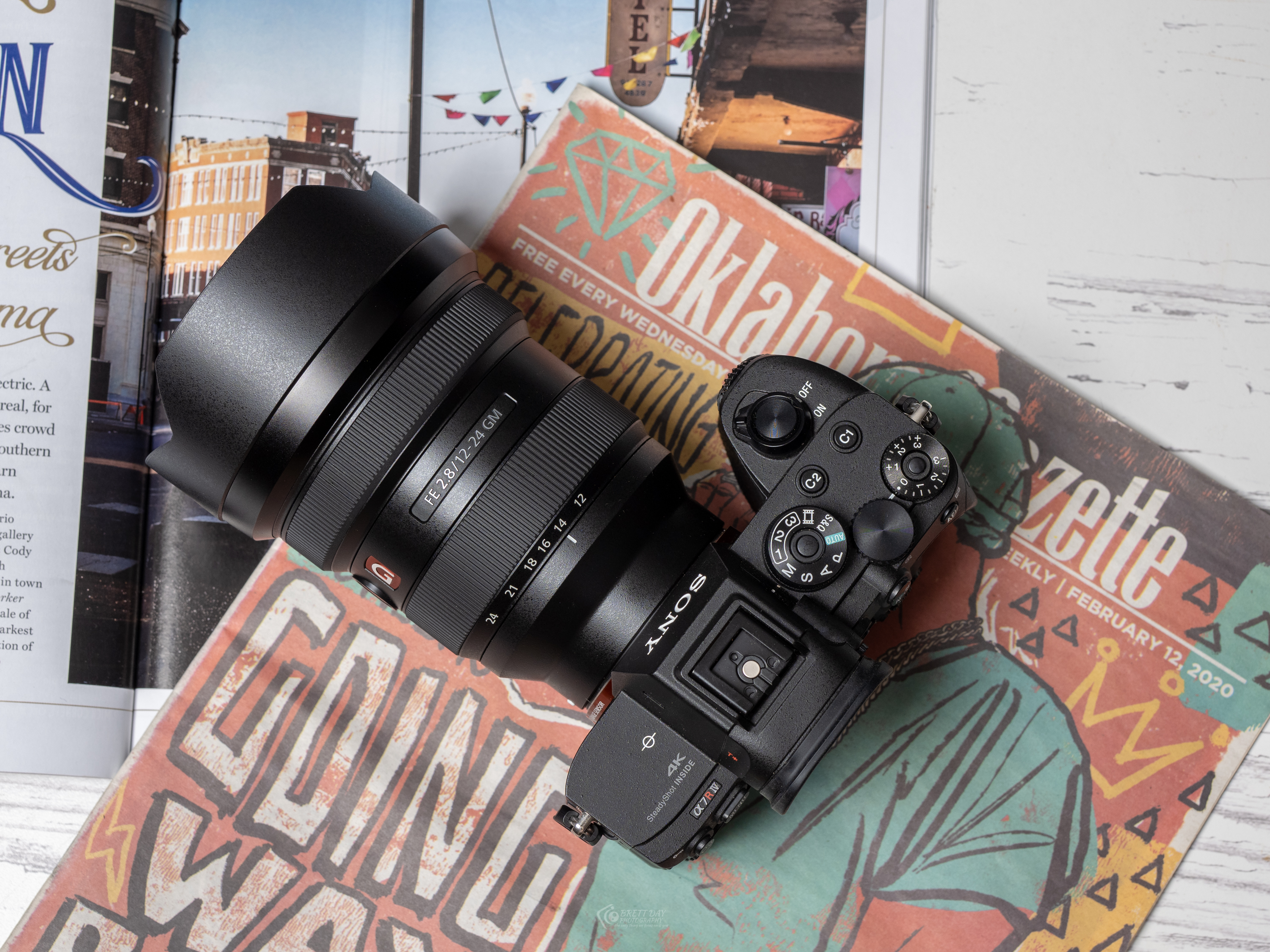Last Updated on 11/16/2020 by Chris Gampat
The world’s fastest and widest Full Frame lens in this category is the Sony 12-24mm f2.8 GM, but it comes with a worldie of a price tag.
The Sony 12-24mm f4 has been a staple in the camera bags of landscape shooters for a while, and so it should be: it’s a great lens. But there has been a clamoring for a faster G Master version. If you’re a photographer who has a need for speed, you’ll be pleased to know that your wait for a faster, ultra-wide-angle lens from Sony is over; the Sony 12-24mm f2.8 GM is finally here. It joins at a time when others such as Sigma and Tamron, have already released their fast ultra-wides. However, Sony has pushed the envelope with their offering. The Sony 12-24mm f2.8 GM is the world’s widest fast 12-24mm f2.8 lens on any Full Frame platform, but does it warrant its eye-watering price tag? Find out in our full review.
Table of Contents
Pros and Cons
Pros
- Excellent overall build quality
- Weather sealing
- Speedy autofocus
- A fast, constant aperture (f2.8) across the focal range is always nice
- Flare and chromatic aberrations are controlled very well
- Uses drop-in filters that sit in front of the rear element
- Great image quality overall
- Renders nice, natural colors
Cons
- Significantly more expensive at $3,000 than its rival, the Sigma 14-24mm f2.8 DG DN, which costs $1,379
- Some distortion on the wide end but it’s expected as the Sony 12-24mm f2.8 GM is not rectilinear
- It’s bigger and heavier than the competition
Gear Used
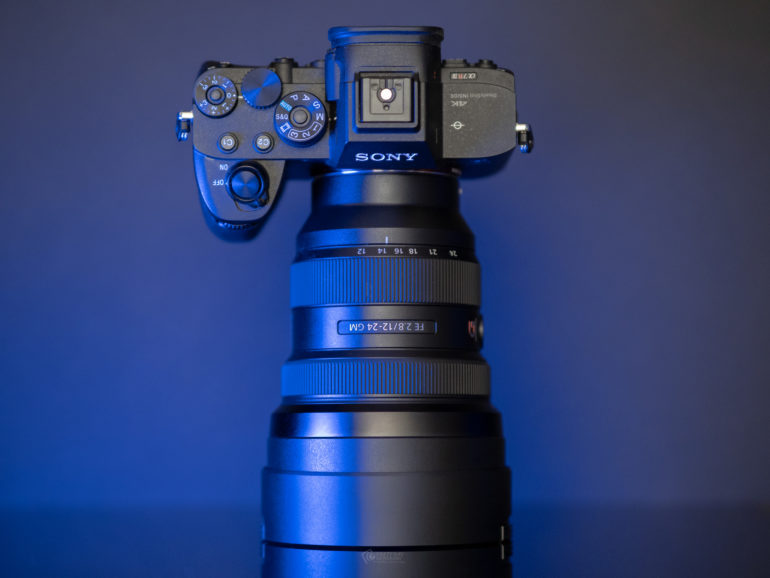
We used the Sony FE 12-24mm f2.8 GM with the Sony a7r IV.
Technical Specifications
All technical specs for the Sony 12-24mm f2.8 GM are taken from information that was handed to us from Sony
- Optics – 3XA (extreme aspherical) lenses, 2 Super ED (extra low dispersion) elements, 3 ED elements, and aspherical elements
- Nine circular aperture blades
- Nano AR coating II
- XD Linear Motors for fast focusing
- Min focusing distance 11-inches
- Maximum magnification ratio 0.14
- Weather sealing
- Fluorine coating
- Rear filter holder
- Dimensions 97.6mm x 137mm (3.84-inches wide x 5.39-inches long)
- Weight 847g (1.86lbs)
- Worlds first Full Frame 12-24mm f2.8 ultra-wide zoom lens
Ergonomics
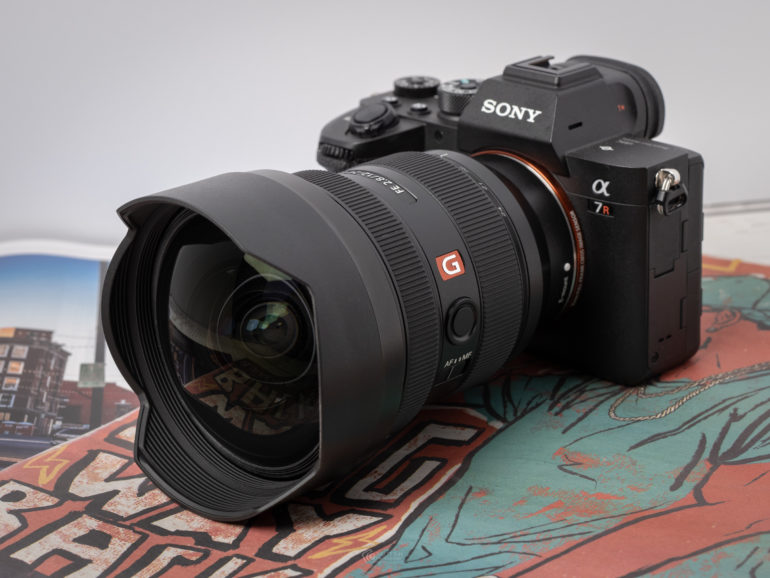
The first thing you will notice about the Sony 12-24mm f2.8 GM is the size of the bulbous front element. It’s huge. In fact, thanks to the built-in lens hood, this lens measures in at 3.84 inches at its widest. Aside from the massive piece of glass, you’ll notice the nicely sized zoom ring and the manual focus ring, which sit at the front of the lens.
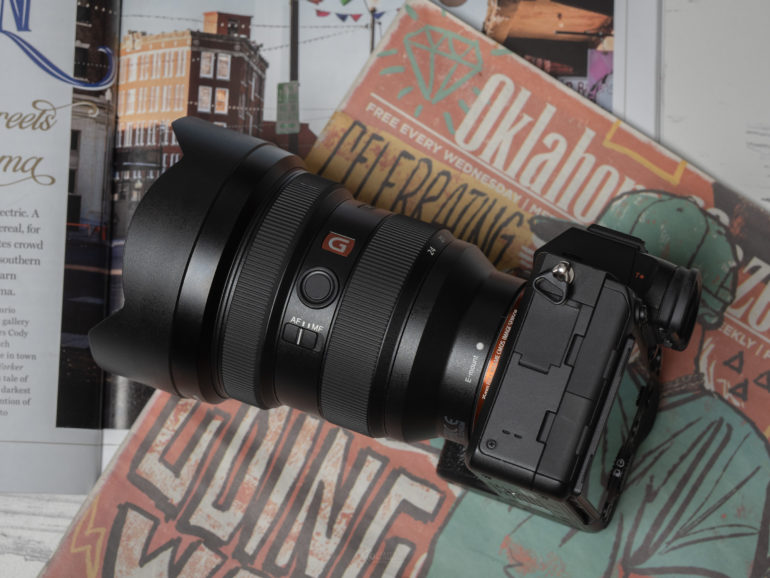
On the left-hand side of the Sony 12-24mm f2.8 GM, you will find just two controls: the focus lock button, and the switch to go back and forth between manual and autofocus. You’ll also find the flashy G emblem, which is there to remind you and everyone else that you dropped some serious cash on this thing.
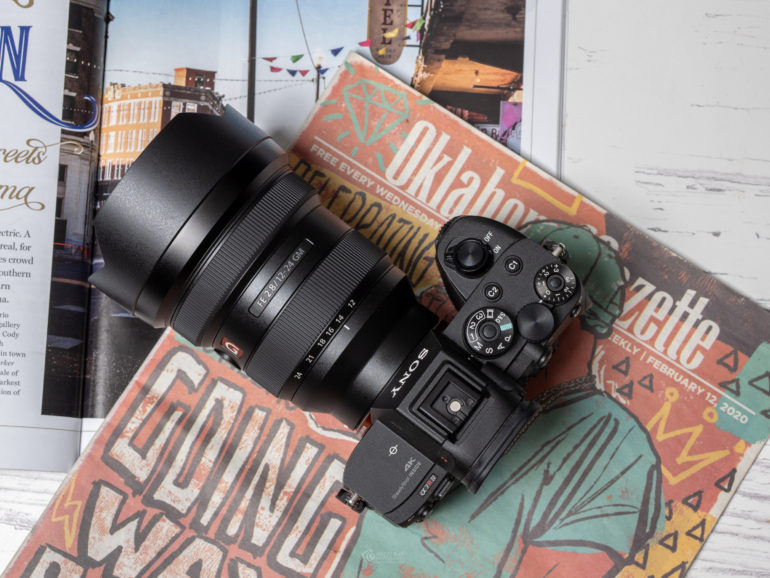
The Sony 12-24mm f2.8 GM is a big, beefy lens, but despite its heft and weight (1.86lbs), it feels quite nice in hand. The body of the lens has a slight texture to it, and the rubber grips around the zoom and manual focus rings feel great and give you a great place to grip the lens. Overall the Sony 12-24mm f2.8 is quite minimalist by design. Apart from the G logo, the focal length markings, and the shiny silver text that tells you what lens you’re using, there’s not a whole lot going on.
“The fit and finish are excellent. The body of the lens feels well constructed, and the zoom and manual focus rings offer just the right amount of resistance.”
Brett Day – Gear Editor
Build Quality
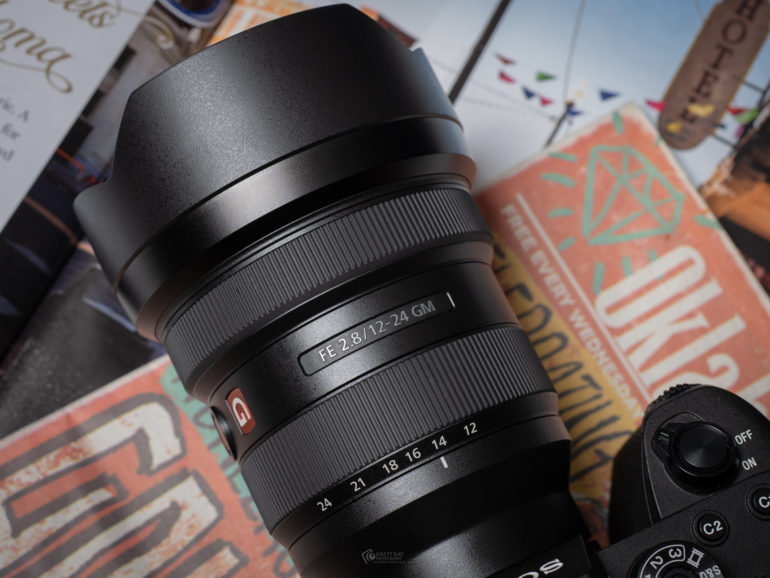
As you would expect from a Sony G Master lens, the build quality of the 12-24mm f2.8 GM is exceptional. The fit and finish are excellent. The body of the lens feels well constructed, and the zoom and manual focus rings offer just the right amount of resistance.
The Sony 12-24mm f2.8 GM is a lens that will be used by photographers who will be out in the field in all sorts of unsavory weather conditions, and I have no doubt that the lens will square up to whatever Mother Nature can throw at it. If you’re a landscape photographer and you get caught in the rain, you have nothing to worry about. If you’re an astrophotographer who’s outside in the dead of a cold night, you can be assured that the lens will be just fine, and if you like cityscape photography, the lens feels like it will be tough enough to survive being jostled around in the city. Like other Sony G Master lenses. the Sony 12-24mm f2.8 GM is a lens that has been built to last.
A word of warning, though. You’re going to want to make sure you keep hold of the lens cap, which fits over the front element. Whenever you’re not actively shooting with a lens like this, you’re going to want to make sure that the glass is protected. It will get dirty quickly, and there is a bigger chance of causing damage to the glass due to the protrusion of the front element. With that being said, if you take care of the lens, it will last for many, many years.
“It’s hard to explain just how wide 12mm is on a Full Frame camera. I could insert an inappropriate yo momma joke along the lines of needing to make a panoramic image to make her fit in the frame, but the Sony 12-24mm f2.8 GM renders this joke obsolete. Yep, that’s how wide this lens is.”
Brett Day – Gear Editor
Ease of Use
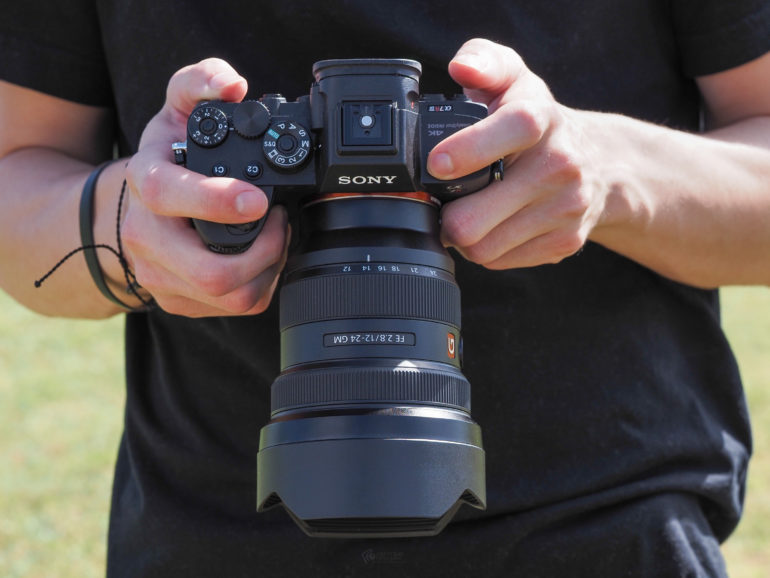
The Sony 12-24mm f2.8 is a large lens, but you will find that it balances well. I had no issues with this lens when paired with the a7r IV, and I never thought that the combination was too front heavy. The lens itself is easy to use. You have a nicely sized zoom ring, which turns smoothly, and you have a thinner, but still easy to use the manual focus ring. On the side of the lens, you have a switch which allows you to change between manual and autofocus, and the fantastic focus hold button which can also be reprogrammed to control just about any camera function.

One thing you absolutely have to keep in mind with the Sony 12-24mm f2.8 is that you cannot use conventional filters with it because of the bulbous front element. However, you can use drop-in filters at the rear of the lens. This is an excellent solution to a problem that has plagued many lenses like this in the past. I do have to say, though, that the Sigma 14-24mm f2.8 DG DN Art also has this feature, so it’s not entirely unique to this Sony lens.
As you can see in the image above, the rear element has a square tray that sits in front of the rear element. You can simply drop in your filter, attach the lens to the camera, and you’re off to the races. I did not get the chance to use any drop-in filters with the lens during the review period, but it’s nice to know that the feature is there. Overall, the Sony 12-24mm f2.8 is an easy lens to use.
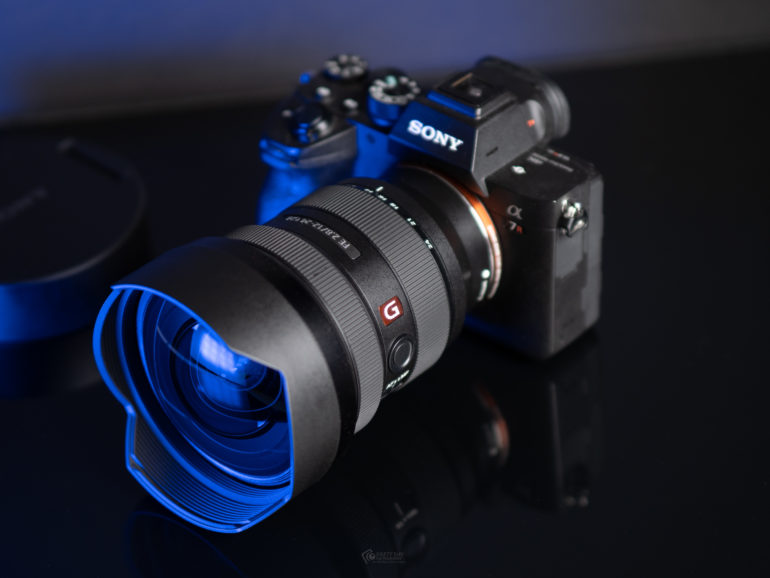
It’s hard to explain just how wide 12mm is on a Full Frame camera. I could insert an inappropriate yo momma joke along the lines of needing to make a panoramic image to make her fit in the frame, but the Sony 12-24mm f2.8 GM renders this joke obsolete. Yep, that’s how wide this lens is. If you have never used an ultra-wide before, it may take you some time to get to grips with it how to get the most out of this lens. However, using the lens in terms of its operation is as easy as ABC.
“Switching focus from near objects to far and back again happens in the blink of an eye.”
Brett Day – Gear Editor
Autofocus

The Sony 12-24 f2.8 GM focuses incredibly quickly on the Sony a7r IV, and I am sure it will do the same on any of the newer Sony camera bodies. While you’re not likely to use this lens for any sports or rapid action, should the need arise, the lens will be up to the task thanks to the XD linear focusing motors that Sony uses in their GM lenses. Switching focus from near objects to far and back again happens in the blink of an eye. Seeing as this lens will mostly be used for landscapes, cityscapes, and astrophotography, you will have nothing to worry about when it comes to its performance.
“Images exhibit great sharpness, nice colors, and little in the way of chromatic aberrations. We would honestly expect nothing less from a G Master lens.”
Brett Day – Gear Editor
Image Quality

There’s no surprise here that the images you can produce with the Sony 12-24mm f2.8 GM can be spectacular. Aside from some distortions (which we expect with ultra-wide-angle lenses), the images exhibit great sharpness, nice colors, and little in the way of chromatic aberrations. We would honestly expect nothing less from a G Master lens, especially one as costly as this. If you know what you’re getting yourself into with an ultra-wide lens, you will find that the Sony 12-24mm f2.8 GM can deliver on all fronts.
Bokeh

Let’s face it; you will not be buying the Sony FE 12-24mm f2.8 GM for the bokeh. Ultra-wide and wide-angle lenses are not known for their bokeh abilities, and this remains true with the 12-24mm f2.8 from Sony. Can you create some background blur? Yes, you can if you get nice and close to your subject? Is it pleasing? Take a look for yourself. The above image was shot at 12mm at f2.8. As expected, it’s incredibly busy back there.

The bokeh produced when shot at 24mm and f2.8 is much more pleasing, and if you do want to create some blur, the wide end is what you’ll want to use. But let’s be real; nobody buys an ultra-wide-angle lens for the bokeh. Keep your bokeh expectations on the low end with this lens and you will be okay with it.
Chromatic Aberration and Distortions

I have to say that Sony has done a great job with the 12-24 f2.8 GM in regards to controlling chromatic aberration. In backlit situations that are high in contrast, you’re going to find a little bit of purple fringing, but you really have to look for it. In fact in the image above, I only found a small amount of fringing around the branches of the tree to the right-hand side. The amount of purple fringing is so small that when Lightroom or Capture One receives profiles for this lens, the fringing will be taken care of in a split second.

When it comes to distortion control, again the Sony 12-24mm f2.8 GM does a good job. As you would expect with a lens as wide as this one, at 12mm you’re going to find distortion; there is simply no way around it. You will see that toward the edges of the frame the image becomes stretched. It’s nowhere near as bad as some ultra-wide angle lenses I have used previously, but it is there.

The image above has had a slight distortion correction of +9 applied to it. The changes might be hard to see here, but I was able to remove the bowing of the stadium. Again, it didn’t take much to correct it. As you make your way out to the longer end of things with this lens (24mm), distortion control is great, and you will have nothing to worry about. As with the chromatic aberrations, as soon as a lens profile is released for your editing software, one-click will fix it. The lens controls flaring very well too, which is often a problem for lenses with bulbous elements.

When it comes to vignetting, again, you’re going to find some when you’re using this lens at f2.8, but it’s not too bad, and it is easily correctible during post. In comparison with the Canon RF 15-35mm f2.8, this lens from Sony actually handled vignetting better. By the time you hit f4 the vignetting is gone.
Color Rendition

The colors the Sony 12-24mm f2.8 produces are nice and natural, which is a great thing for the audience this lens is targeted towards. As a landscape photographer myself, I would much rather shoot with a lens that produces slightly natural, perhaps slightly muted colors. You’re not going to be disappointed with what you get straight out of your camera with this lens attached. Let’s face it; no matter what colors the lens produces straight out of the camera, unless you shoot JPEG only, you can change the color rendering to your heart’s content during post.
Sharpness

When shooting wide open with this lens, you will find that the center is ridiculously sharp, but that the extreme edges are just a tad softer. However, when you stop this lens down ever so slightly, you get edge to edge sharpness. You will love the sharp images this lens will help you produce.
Extra Image Samples
Below you will find both edited and unedited RAW files so that you can get a good feel for what this lens can do. All images have been marked accordingly.

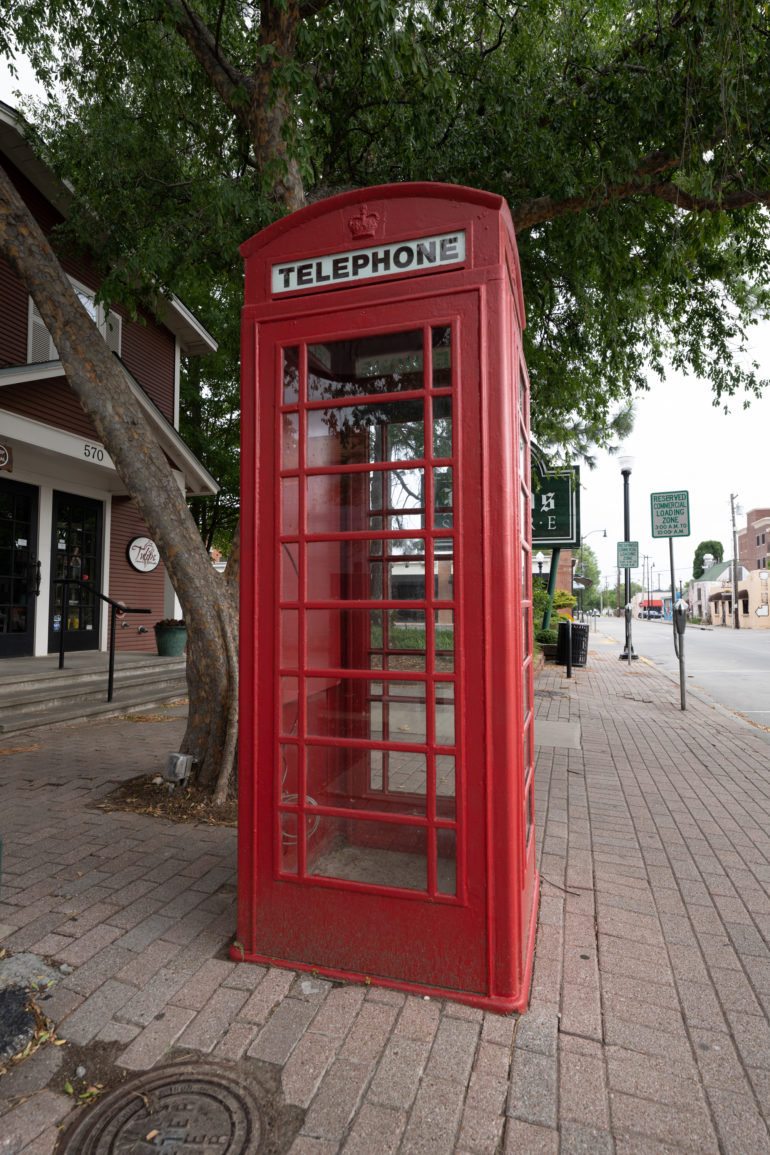


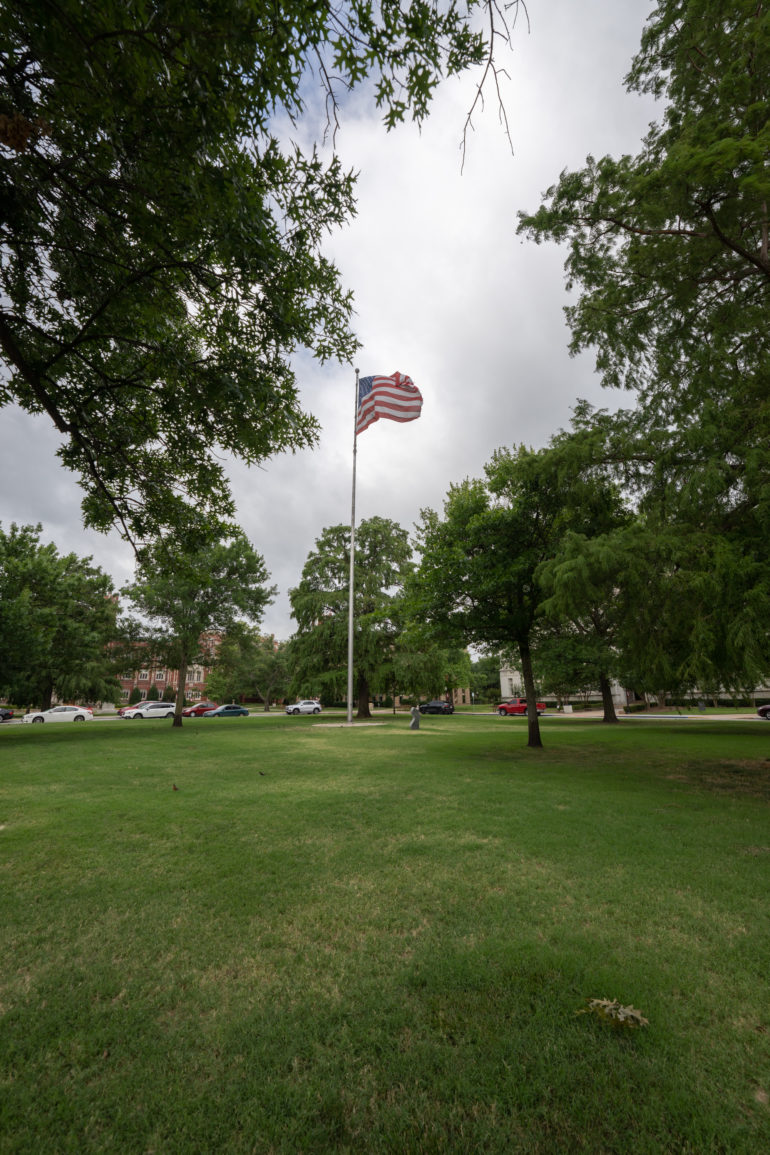














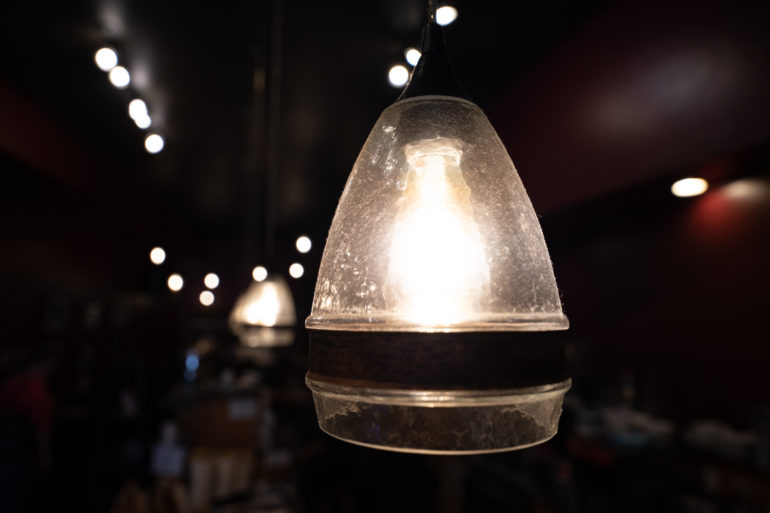
“Images are sharp and have natural colors, and the lens is built like a tank. At $3,000, it’s not cheap, but that’s the price you pay for innovation when coupled to a G Master designated lens.”
Brett Day – Gear Editor
Conclusions
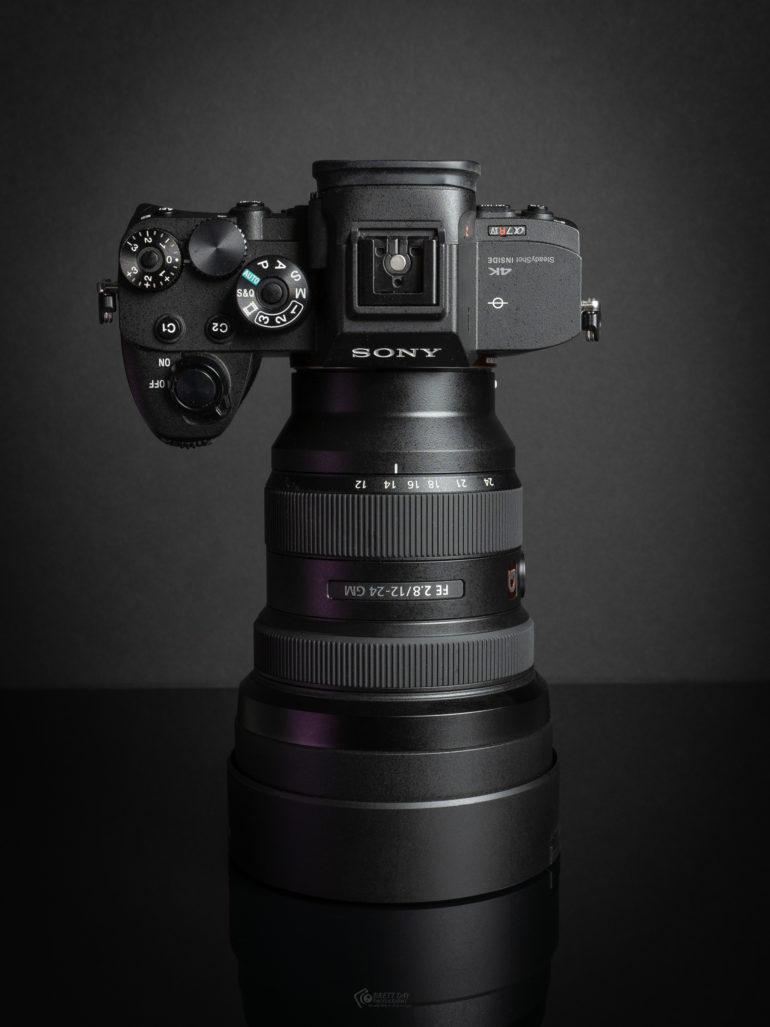
Likes
- The build quality is great
- Overall image quality is really nice
- The fast, silent focusing motors are appreciated
- The ability to use drop-in filters
Dislikes
- The price
I have been impressed with the Sony 12-24mm f2.8 GM during my time with it. When it comes to Sony G Master lenses, as a buyer you should expect nothing but the best when it comes to build quality, image quality, and its all-around performance. And the Sony 12-24mm f2.8 certainly delivers in this respect.
So who is this lens for exactly? This lens is for photographers who want nothing but the best attached to their camera. It’s also only for photographers who have deep enough pockets because, at $3,000, it’s not cheap. If you’re a landscape photographer, astrophotographer, real estate, or architectural photographer, then this is likely a lens you will spring for, and you’ll be pleased with the results. The only thing you will need to decide is whether paying a $1,600 premium for this lens over the Sigma 14-24mm f2.8 DG DN is something you want to do. It seems like a lot to pay for an extra 2mm on the wide end, but, as Reviews Editor Paul Ip said, if you find yourself in a situation where you need the extra 2mm to get the shot you need, then it would have been worth the price of admission.


The faults with this lens are really so minor that this lens deserves five out of five stars. Distortions are well controlled, chromatic aberrations are almost non-existent, images are sharp and have natural colors, and the lens is built like a tank. At $2,998, it’s not cheap, but that’s the price you pay for innovation when coupled to a G Master designated lens. The lens will hit your favorite retailers on August 13th, 2020, so you still have a little more time to save for it.


